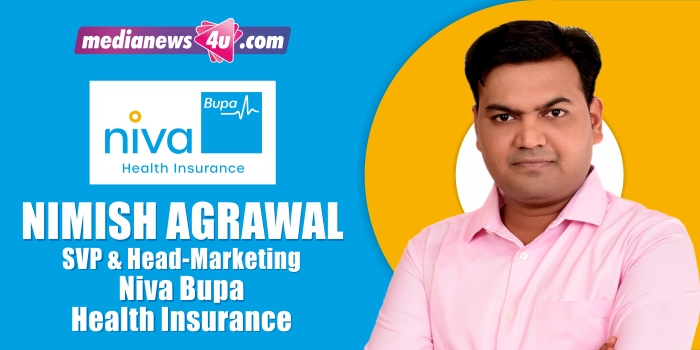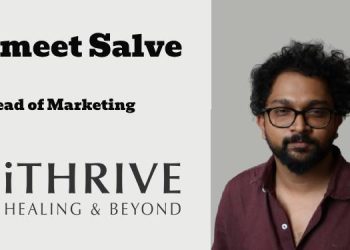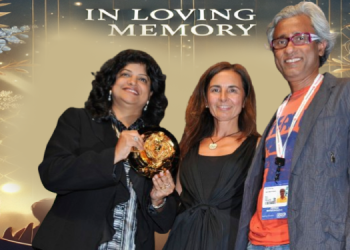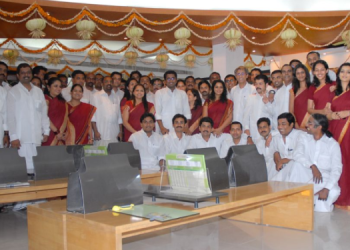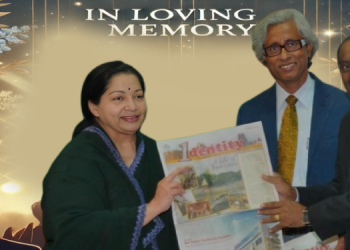Niva Bupa Health Insurance launched a digital campaign as part of Diwali festivities. The company had rebranded from Max Bupa to Niva Bupa in July 2021.
In conversation with Medianews4u, Nimish Agrawal, SVP and Head of Marketing at Niva Bupa Health Insurance, spoke about the campaign objectives and marketing approach.
Speaking about the market share of Niva Bupa Health Insurance, Agrawal said, “Health insurance is a push product, there are a lot of revenue channels. Online, retail, B2B etc are some of them.”
From 5.5 to 5.7 pc share in the retail channel two years ago, the company claims to have 8.5 pc market share in the standalone health insurance space today.
On the objectives behind the Diwali campaign, Agrawal said, “Our strategy is in line with what we articulated when we moved from Max Bupa to Niva Bupa. The three things we focused on during the brand transition were: we articulated the purpose of the brand and given the penetration of health insurance in the country our purpose is to give every Indian the confidence to access the best health care. Second factor is that there is a lot of negativity associated with the way insurance is orchestrated, the consumer narrative of insurance is always filled with celebrating the vulnerabilities of life.”
Agrawal said that Niva Bupa wanted to talk more about the positive aspects of life.
“It is also important for us to use incidents, occasions, and consumer cohorts which are far more relatable. Today, the consumption has moved on from TV to digital medium and the creatives need to relate to the audience. With the new campaign, what we are trying to do is that if we have to play the role of an enabler to give every Indian the confidence of best healthcare, we need to figure out ways for Indians to consider health insurance. Unfortunate reality is that even after three waves of infection, there is a large section of the population who are either underinsured or uninsured. Diwali plays an important role in that direction. After two years we are celebrating Diwali and it should teach us something. One important fact is that health needs protection. Second is, from the cultural fabric of large celebration, gifting is part of our culture. Gifting health insurance is comparatively new to Indians; we should talk about it,” he added.
On the insurance segment pre and post pandemic, he said, “During Covid period, the insurance category was growing at 48 pc and Niva Bupa was growing at 60 pc. Post pandemic, the category has stabilised a little bit, growth rate has become 30 pc. There is a dip in terms of growth, but it has stabilised at a higher rate of growth.”
Digital spends and non-metro push
Niva Bupa will strive to be where the consumers are, underlined the SVP.
“If they choose to be on OTT, we would be there. From a media standpoint, we orchestrate an omni-channel strategy. There is a large part of India which still relies on cable connections. Our marketing mix has got TV, outdoor, radio, digital radio, digital, OTT etc. Our marketing mix is 60pc TV and radio and 40pc digital. Within a specific portion of money of what channels we use, is purely a function of creative assets that we have,” he said.
Agarwal noted that the way health insurance is dispersed in the country, a large set of people who are under the ambit of health insurance are under group health insurance (insurance provided by their employer).
“There is a large population in non-metros who don’t have group health insurance or any kind of insurance. We are expanding in Tier 1 and Tier 2 cities, that’s where the growth lies. Our share in these markets are 40 to 45 pc higher than metros,” he revealed.
Emerging trends…
“There are many micro trends. But there are three trends which are manifesting themselves in a reasonable way. First one, the way consumers deal with health insurance has changed. During the pandemic period, the utility of health insurance has become very real. It has changed the consumer relationship with health insurance. More and more consumers are trying to understand the fine prints of health insurance. Previously, the insurance policy was a decision made by the man of the house and was part of financial planning, now we see a lot of females taking the decisions regarding insurance policies. Health insurance has become a family decision,” observed Agarwal.
Despite the growth of digital channels, 80pc of a health insurance business still comes from traditional channels like bancassurance and agencies, noted the marketing head. “Digital contributes a very small portion to it. But, every year digital is growing by 40 to 50pc,” he added.

